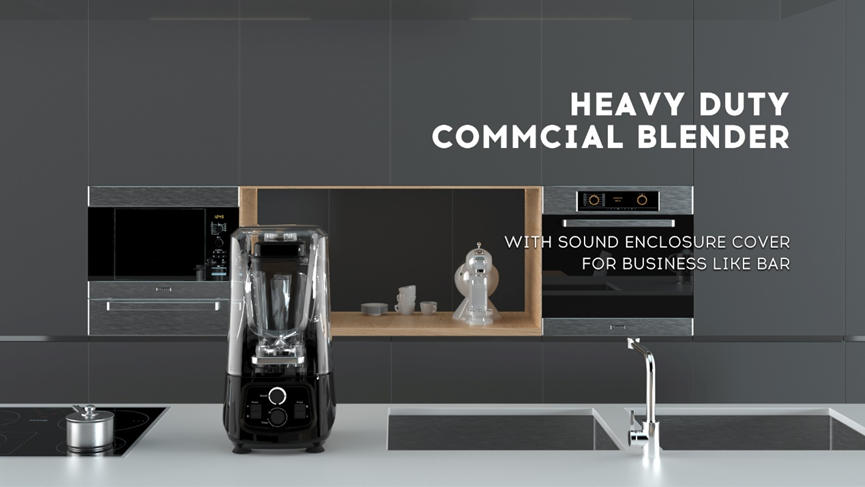Why Choose a Heavy Duty Blender for Industrial Applications?
release time:
2025-04-15
Why Choose a Heavy Duty Blender for Industrial Applications?
In the ever-evolving landscape of industrial manufacturing, choosing the right equipment can significantly impact your operational efficiency and product quality. Among the critical tools in any production line, a **heavy duty blender** stands out as an essential asset. This article delves into the myriad benefits of using heavy duty blenders in industrial applications, helping you understand why they should be a cornerstone of your manufacturing process.
Table of Contents
- What is a Heavy Duty Blender?
- Advantages of Heavy Duty Blenders
- Key Features to Consider
- Cost-Effectiveness of Heavy Duty Blenders
- Industries Using Heavy Duty Blenders
- Maintenance Tips for Heavy Duty Blenders
- Common FAQs
What is a Heavy Duty Blender?
A **heavy duty blender** is specifically designed to handle the rigorous demands of industrial applications. Unlike standard blenders, these machines are equipped with powerful motors, robust blades, and advanced technology to blend, mix, or puree large quantities of materials efficiently. They are ideal for various industries, including food processing, pharmaceuticals, and cosmetics, where high performance and reliability are paramount.
Advantages of Heavy Duty Blenders
Heavy duty blenders offer several advantages that make them a preferred choice for industrial applications. Below, we explore some of the primary benefits.
Improved Efficiency
When it comes to industrial operations, efficiency is key. Heavy duty blenders are engineered to optimize blending processes, significantly reducing the time required to achieve the desired consistency. Their powerful motors ensure that even the toughest ingredients are blended seamlessly, leading to faster production times. This improvement in efficiency can directly translate to increased output, allowing businesses to meet demand without sacrificing quality.
Consistent Quality
In industrial applications, maintaining consistent product quality is crucial. Heavy duty blenders enable manufacturers to achieve uniformity in blending, which is vital for products that require precise formulations. Whether it’s creating a consistent texture in food products or ensuring the right viscosity in cosmetic formulations, these blenders guarantee that every batch meets the same high standards. This consistency helps build brand trust and customer loyalty.
Versatile Applications
Heavy duty blenders are incredibly versatile, making them suitable for a wide range of applications. From mixing dry powders to creating emulsions or blending liquids, these machines can handle various tasks. Industries such as food and beverage, pharmaceuticals, and even chemical manufacturing utilize heavy duty blenders for their ability to adapt to different blending needs. Their versatility makes them a valuable investment for any production facility.
Key Features to Consider
When selecting a heavy duty blender for industrial applications, several key features should be taken into account to ensure you choose the right model for your needs.
Power and Capacity
The power of the blender’s motor is one of the most critical factors to consider. A high wattage motor can handle tougher ingredients and larger batches. Additionally, consider the capacity of the blender's container. Larger capacities are ideal for high-volume production, while smaller models may suffice for smaller operations. Understanding the power and capacity needs of your specific application can help narrow down the options.
Durability and Materials
In an industrial setting, durability is non-negotiable. Heavy duty blenders are constructed with robust materials that can withstand the demands of continuous use. Stainless steel containers, for example, are not only resistant to rust and corrosion but also easy to clean, ensuring hygiene in food processing. When selecting a blender, look for models with a proven track record of durability and reliability.
Cost-Effectiveness of Heavy Duty Blenders
While the initial investment in a heavy duty blender may be higher compared to standard models, the long-term cost-effectiveness is undeniable. Their efficiency leads to lower operational costs through reduced energy consumption and decreased labor time. Additionally, the durability of these machines means they require less frequent replacement, further enhancing their cost-effectiveness. When calculating the return on investment, heavy duty blenders often prove to be financially advantageous for businesses.
Industries Using Heavy Duty Blenders
Heavy duty blenders find applications across various sectors, each with unique blending requirements. Here are some industries that benefit significantly from these powerful machines:
Food and Beverage Industry
In the food and beverage sector, heavy duty blenders are used to create sauces, dressings, smoothies, and other blended products. Their efficiency and ability to maintain product quality are essential for meeting consumer expectations.
Pharmaceutical Industry
Pharmaceutical manufacturers often rely on heavy duty blenders for mixing powders and creating emulsions. The precision offered by these blenders is critical for producing consistent and effective medications.
Cosmetics Industry
In the cosmetics industry, heavy duty blenders facilitate the mixing of various ingredients to create lotions, creams, and other beauty products. The ability to blend thick and viscous materials is a considerable advantage in this field.
Maintenance Tips for Heavy Duty Blenders
To ensure longevity and optimal performance, proper maintenance of heavy duty blenders is essential. Here are some tips to keep your blender in top shape:
1. **Regular Cleaning**: Clean the blender after each use to prevent the buildup of residues that can affect performance.
2. **Inspect Blades**: Regularly check the blades for wear and tear. Dull blades can hinder blending efficiency.
3. **Motor Maintenance**: Ensure the motor is well-lubricated and free from dust to prevent overheating.
4. **Follow Manufacturer Guidelines**: Always adhere to the maintenance schedule and guidelines provided by the manufacturer to keep the blender running efficiently.
Common FAQs
1. What is the difference between a heavy duty blender and a standard blender?
A heavy duty blender is designed for industrial use, featuring stronger motors and more robust construction, suitable for blending larger volumes and tougher ingredients.
2. Can heavy duty blenders handle hot liquids?
Yes, many heavy duty blenders are designed to handle hot liquids, but it's essential to check the manufacturer's specifications to ensure safe operation.
3. How do I choose the right capacity for my heavy duty blender?
Consider your production volume and the types of materials you will be blending. Larger facilities may benefit from higher-capacity models, whereas smaller operations might find mid-sized blenders adequate.
4. Are heavy duty blenders easy to clean?
Most heavy duty blenders are designed for easy cleaning, often featuring removable parts that are dishwasher safe or can be easily washed by hand.
5. What types of materials can be blended with a heavy duty blender?
Heavy duty blenders can handle a wide range of materials, including thick liquids, dry powders, and even solid ingredients, depending on the specific model's capabilities.
Conclusion
Investing in a heavy duty blender for industrial applications is not just a choice; it’s a strategic move that can lead to enhanced efficiency, consistent product quality, and long-term cost savings. With their robust construction and versatility, these machines are indispensable in various industries, from food and beverage to pharmaceuticals and cosmetics. By understanding the benefits, features, and maintenance requirements of heavy duty blenders, businesses can make informed decisions that will ultimately elevate their production processes and meet the ever-growing demands of the market. Embrace the power of heavy duty blending equipment, and watch your operational capabilities soar.
More information





